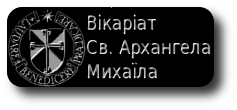
Our Lady and Dogmas: Pondering the Assumption
17-08-2010
"The Immaculate Mother of God, the ever Virgin Mary, having completed the course of her earthly life, was assumed body and soul into heavenly glory." -- "Munificentissimus Deus"
By Mark Miravalle
STUBENVILLE, Ohio, AUG. 16, 2010 (Zenit.org).- The words solemnly uttered by Pope Pius XII on Nov. 1, 1950, brought a new global appreciation to the Mother of Christ's glorious exit from earth to heaven, a doctrinal truth which has been celebrated liturgically since the sixth century.
Servant of God Pius XII went on the say that Jesus honored his mother as only a divine son could: by preserving her from the corruption of the grave and effecting an anticipated resurrection of her body. No one keeps the fourth commandment to "honor thy father and thy mother" better than the incarnate Son of God, who is also son of Mary.
The Assumption of Mary is also the supernatural effect of her Immaculate Conception. She who was conceived full of grace and "sine macula" (without stain) could not suffer the human effects of sin which include the corruption of the body. Her "dormitio" -- or death -- was a separation of spirit from body, not as a result of disease or corporal decay, but in virtue of her perfect discipleship. The Mother desired to share in all that her Savior-Son experienced. She shared in Jesus' redemptive death as a co-redemptrix, and she also shared in the Redeemer's three days of separation of soul and body after the victory of the cross and the eventual resurrection of the body. The Son experiences the Ascension by his own power; the Mother experiences the Assumption by the Son's power.
The Immaculate Virgin's assumption into heaven is an eschatological sign of hope for the Church. We, too, if we persevere in joining ourselves to the life and death of the Redeemer, can joyfully await the resurrection of our bodies on the last day. But as the Mother precedes us in the order of suffering with Jesus, so too she precedes us in the order of rising with Jesus, body and soul.
Why a dogma?
But why was an infallible dogma by the Roman Pontiff pronounced concerning this ancient Marian truth?
Some say dogmas are only used for settling crucial theological disputes. There were no such disputes regarding the Assumption in the years approaching 1950. Others say dogmas should be used only for clarifying what is not theologically clear. There were no essential ambiguities concerning the Assumption cited in the mariological discussions preceding "Munificentissimus Deus."
Why then a dogmatic pronouncement on the Assumption? Because the Vicar of Christ, led by the Holy Spirit, was inspired to do so to bring forth a new outpouring of grace for the Church through the intercession of the Queen of Heaven -- the Mediatrix of all graces who was newly honored by a solemn papal proclamation of her parting earthly prerogative. The Mother rejoices when her truth is proclaimed, obviously not for reasons of self-undulation, but so the human family can more profoundly appreciate what God has done in her, and wishes to do through her for us.
One objection voiced during the months preceding the 1950 definition by a group of theologians was that the new Marian definition would wreak havoc to ecumenical efforts newly initiated with other Christians. The late Cardinal Edouard Gagnon who lived through the years preceding and proceeding the Assumption definition, repeatedly testified to the opposite -- that immediately following the papal proclamation of Our Lady's Assumption, the Church experienced its greatest ever advancement in ecumenism in Church history up to its time, which consequently led to its historic flourishing at the Second Vatican Council.
Mothers unite. They do not divide. Nor does proclaiming the truth about the Mother of Truth intrinsically cause division. Only the rejection of truth causes division.
But fear of some people rejecting the truth cannot become the new criterion of discernment for when papal infallibility should or should not be used. The whole truth about Jesus, the whole truth about Mary, and the whole truth about the Church must be proclaimed. Fear of rejection was not the criterion used by Jesus in proclaiming the Gospel, and it certainly cannot become so for his Church, especially at a time when the absence of the full Catholic message is causing such ubiquitous human emptiness and heartache.
Rosary crusade
It seems liturgically timely that a worldwide Rosary crusade for a fifth Marian dogma regarding Mary's universal spiritual Motherhood would begin on the solemnity of the Assumption in virtue of it being the most recently declared Marian dogma.
Cardinal Luis Aponte Martínez of Puerto Rico, Archbishop Chinnappa of Madras, India, Mother Angelica, founder of EWTN Television Network, and several other international Church leaders have initiated a yearlong Rosary crusade from Aug. 15, 2010, to Aug. 15, 2011, for the papal definition of the Virgin Mary as the Spiritual Mother of All Peoples in her roles as co-redemptrix, mediatrix of all graces and advocate.
These Church leaders, along with millions of others globally, believe that same glorious effect of a new historic outpouring of grace for the Church and the world will take place through the infallible proclamation of this fifth Marian dogma by Benedict XVI.
Praying the Rosary every day for a year with the intention of releasing the Mother of God's powerful intercession for today's struggling humanity through this papal definition appears to be a no-lose resolution. The Church can use it. The world can use it. And when the Mother is truly honored, the Son is always glorified (cf. "Lumen Gentium," No. 66).
* * *
Mark Miravalle is a professor of theology at Franciscan University of Steubenville. Author of more than a dozen books on Mariology, and editor of "Mariology: A Guide for Priests, Deacons, Seminarians, and Consecrated Persons," he wrote "The Seven Sorrows of China" in 2007. He is married and has eight children.
http://www.zenit.org/article-30069?l=english














